While dogs are incredibly smart and cunning animals, sometimes they can send us some mixed signals that aren’t conclusive to the usual doggy signs. One of those is your dog growling while wagging his tail.
Usually, the reason behind this is a mixup during training, but it’s also a clever trick for more aggressive dogs to lure people in to growl at them.
Most often though, it’s a sign that a dog is still in a good mood, but wants you to back off because you may have done something he didn’t like.
It’s important to know the usual dog signals to understand the nuance that dogs can pose and figure out the reasons behind this type of behavior.
Of course, each reason has a way of remedying said behavior, but more on that later.
Let’s get into the main part of the article first.
1. He’s Just Being Playful
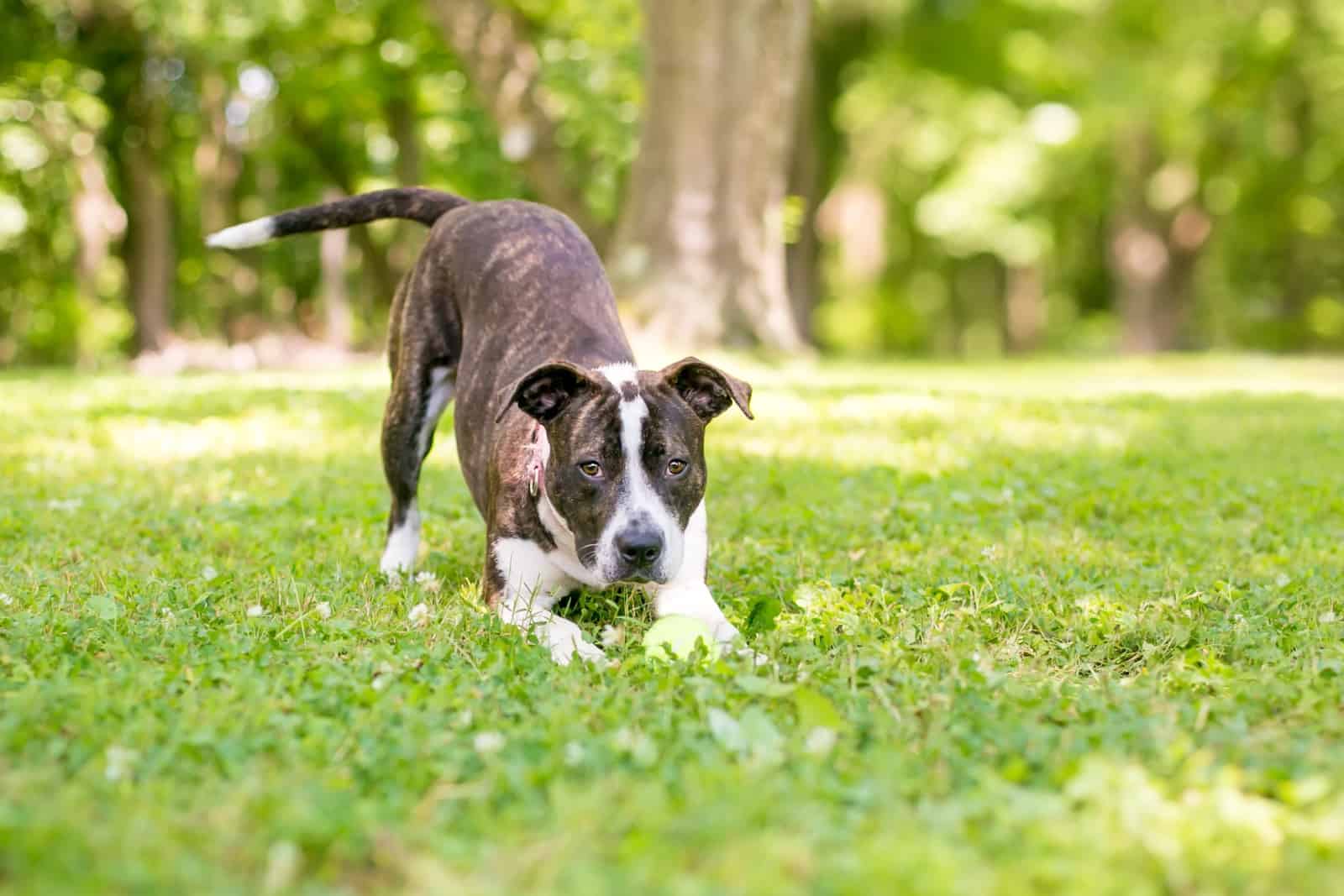
In the most common of cases, a mix of these two behaviors, growling and tail wagging, can mean that your dog wants to do stuff together, but is reluctant to be the one to push the envelope.
That’s why he mixes the growls in even when you come close, acting a little bratty, but ultimately caving to the idea while trying to appear in charge.
2. A Mixup During Training
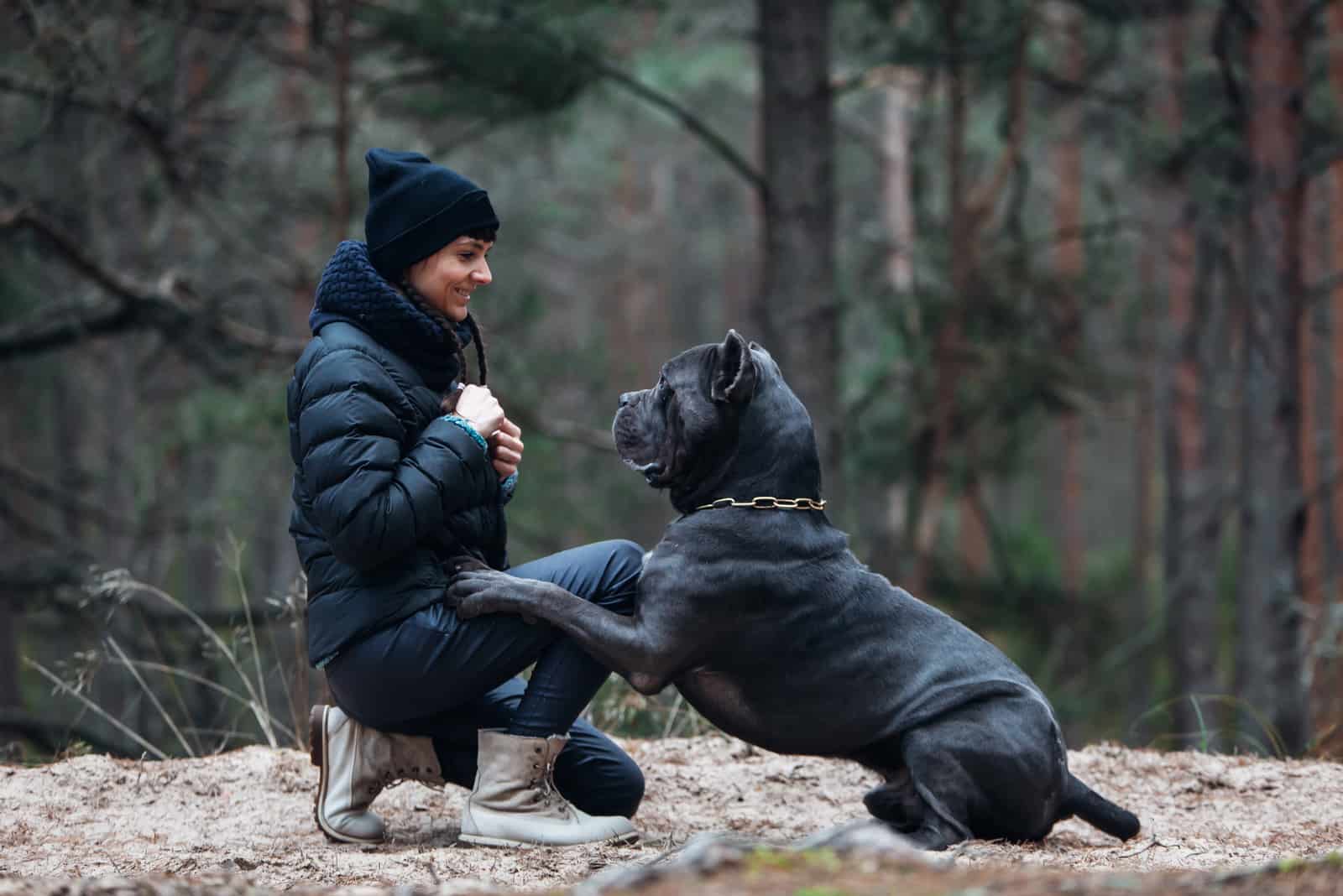
Sometimes when training their dogs, owners can give them mixed signals which can confuse the dog’s normal responses and make them uncertain on how to react to certain situations.
This then has them opt for both responses.
If this is the case, it’s best to remedy this behavior as soon as you can to clear this confusion before taking any further steps toward more complicated training methods.
3. The Dog Is Scared
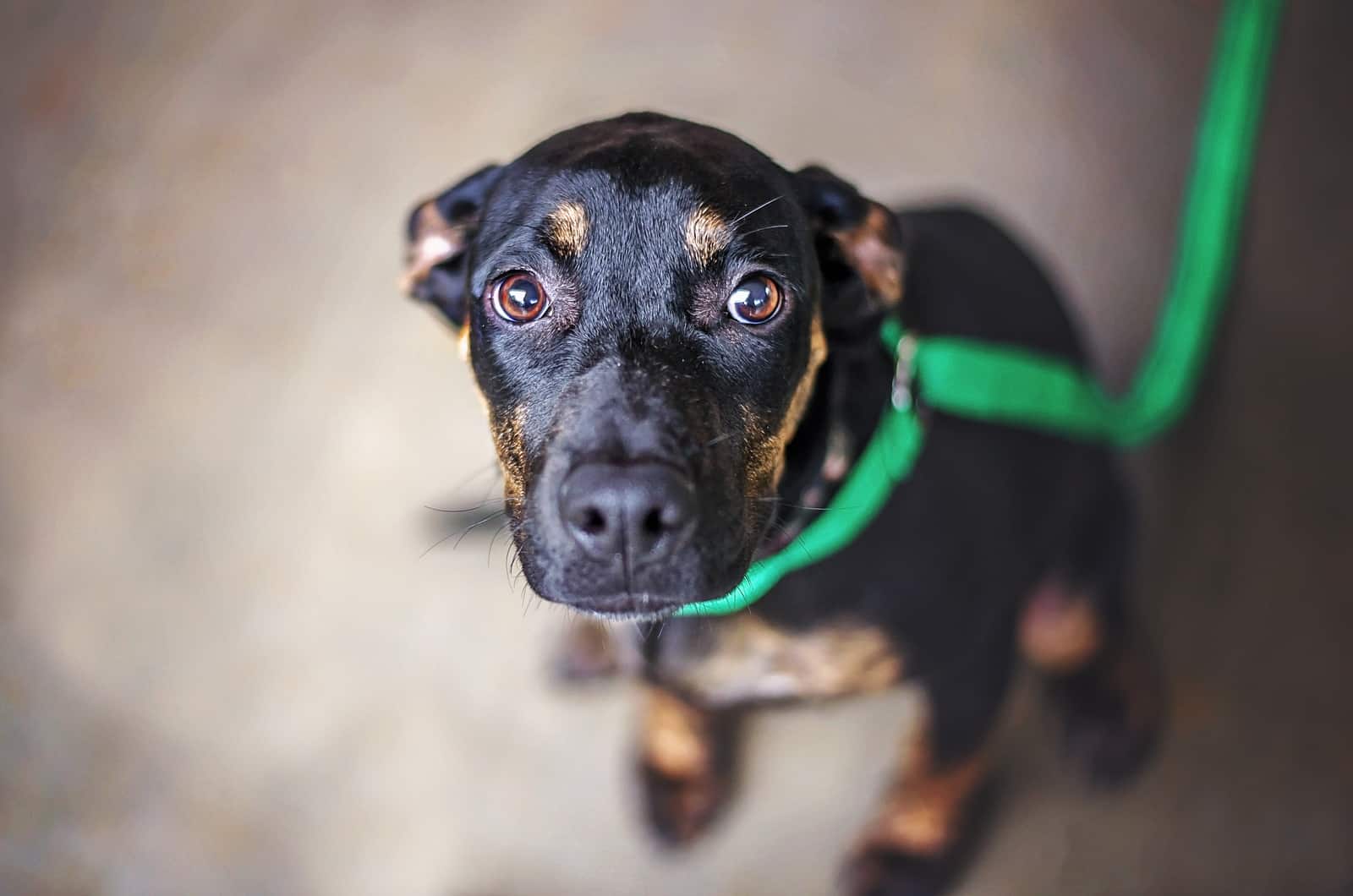
Another common reason for growling while having a tail wagging is when the dog is scared of you for whatever reason.
Sure he’ll be wagging his tail, but it’ll likely be in a lower position than usual.
This wag is often considered one of submission or fear which is something less experienced pet parents often overlook.
This will then be followed by some higher pitched and repeated growling like a cry, as if the dog was in pain.
Should these two signs coincide, then I advise you to back off to not stress the dog any further.
4. He’s In Pain
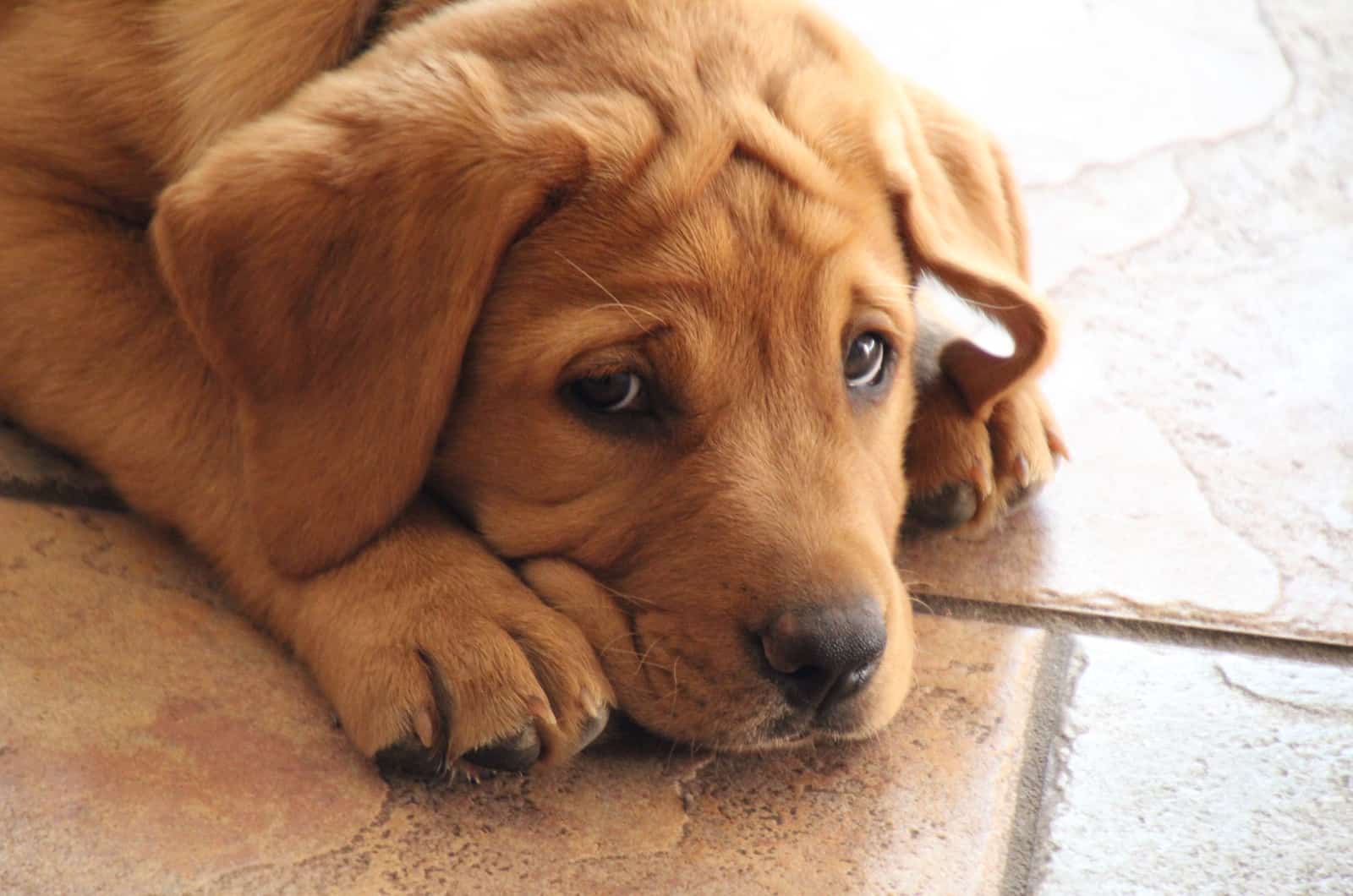
Alternatively, it could be a cry for help.
If the tail isn’t low but rather held high and it’s your dog, then it could be a health issue and he’s glad to see you as he expects you to be able to help him.
Obviously, if you can’t tell what’s wrong, then calling a vet is going to be the next order of business in order to get this behavior to cease and to get your puppo some well needed care.
5. The Dog Is Warning You
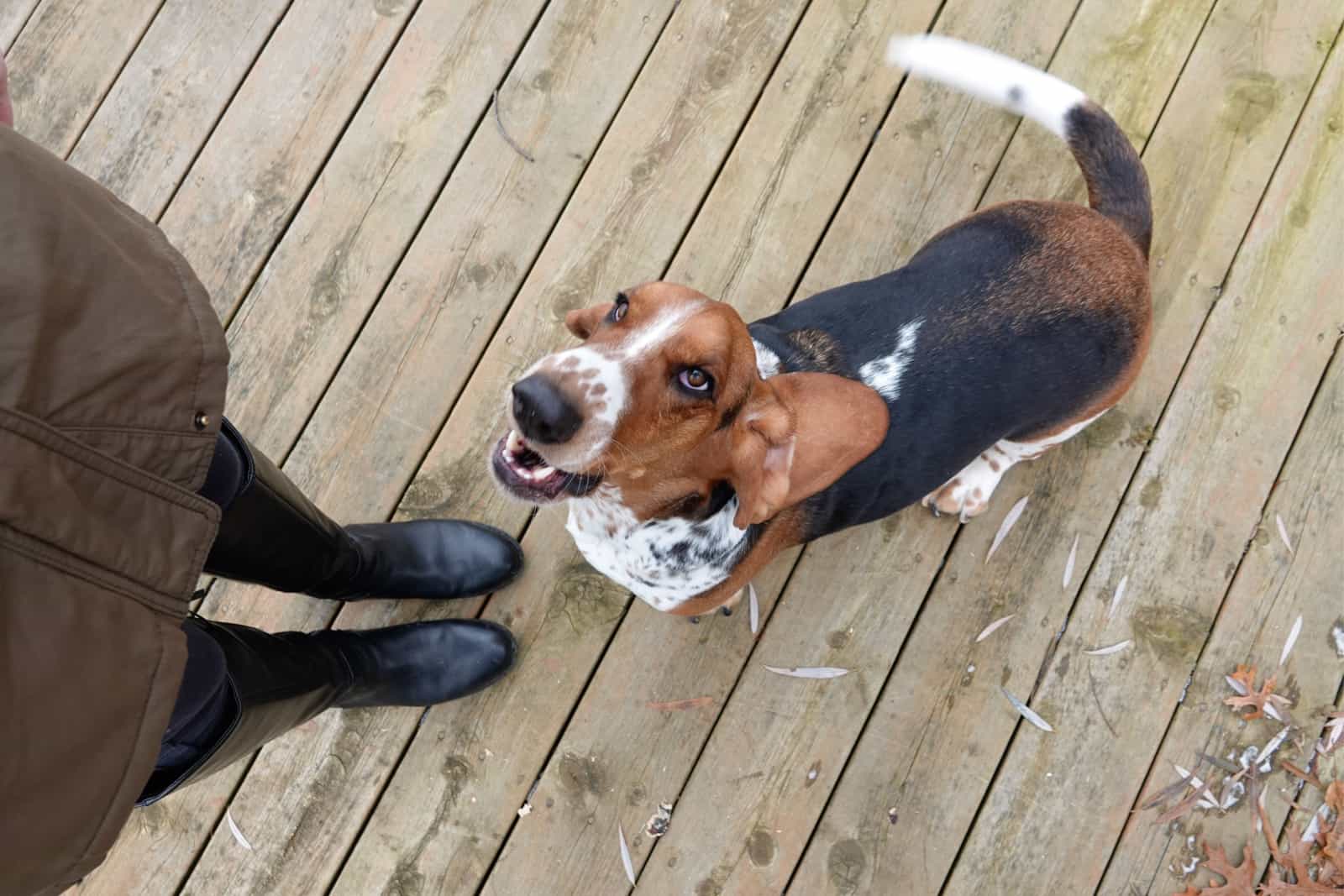
If you approach a dog and the growling is more accentuated, low-pitched, and threatening on top of a tail which is wagging from side to side instead of around in circles, then you’re likely stepping into his territory.
Either that or you’re doing something he doesn’t like.
However, this one isn’t being fearful, but is confident in his ability to bite back if you continue upsetting him.
Here, you’ll want to back off for your safety, otherwise you may end up agitating the dog to a point where he has no other choice but to attack seeing as his warnings bore no fruit.
You’ll know you’ve pushed the envelope too far if his tail stops wagging entirely and stiffens up which means the dog is an inch away from charging you.
How Can I Tell The Difference In Behavior Via Tail Wags And Growls?
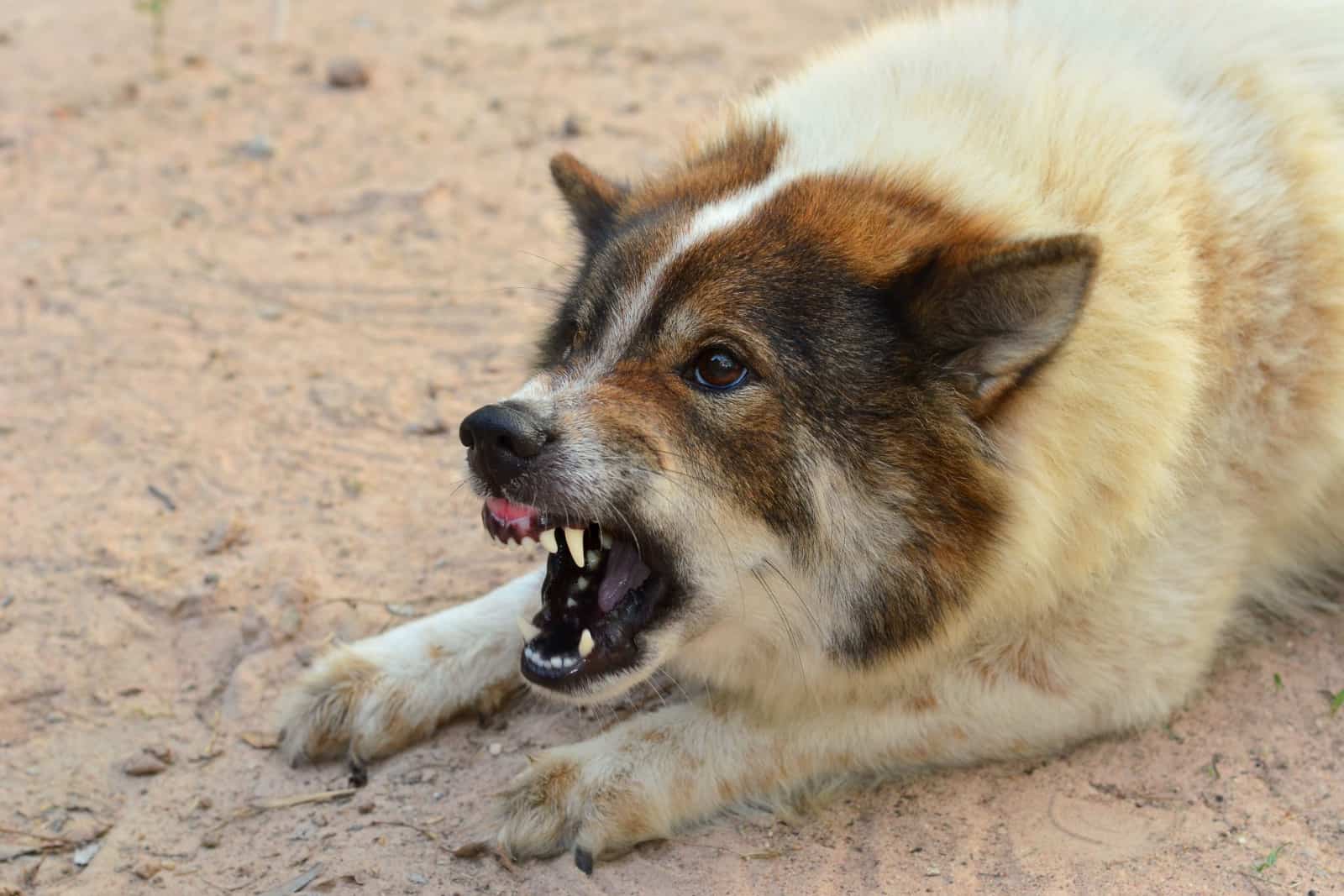
While it may sound complicated, it’s actually quite easy, pay attention to both your dog’s front and back.
A lot of people see a wagging tail and assume a dog is happy and won’t do any harm, but the reality is that the dog has more avenues of expression than just his tail.
If you see his ears lifted and his gaze focused on you while baring his teeth and growling in a lower pitch, then it doesn’t matter what the tail is doing.
The best course of action is to back off.
This is particularly true if you’re not well versed in canine body language.
The other signs are subtle and mostly revolve around growl pitch and the position and curl of the wagging tail.
It’s like an accent in human speech where noticing the slight nuances becomes second nature over time and can mean a world of difference when interacting with a canine companion.
The Tail Wags
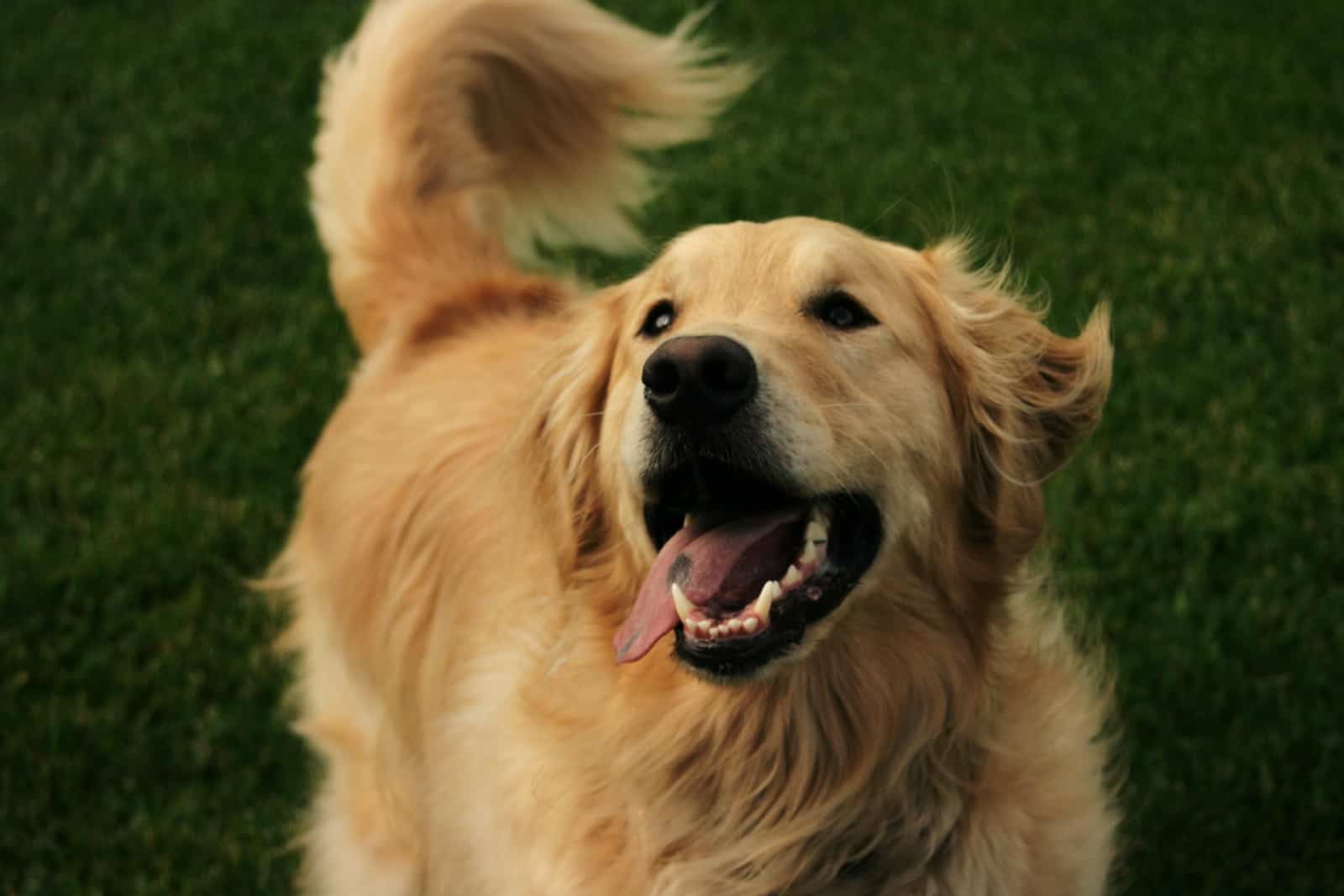
Here are a few basic examples of what each tail position usually means:
1. Showing Confidence
A confident pooch will have his tail raised high and have it wagging rapidly. This is also followed up by a raised head with ears perked up and standing at attention.
If his intent toward you is positive, the tail will be wagging in circles while a negative intent has the tail moving more stiffly and only from one side to another.
2. Showing That He’s Relaxed
Dogs who are chill will have their tail curved while wagging it slower in a pendulous motion. Growling would only occur if you try to interrupt his R&R time.
3. He’s Afraid
Dog’s who are scared will have their tail a lot lower than during other types of behavior, to the point where it may even be tucked between their legs instead of wagging around.
In this case, tail wagging often expresses some form of anxiety or fear and it will be followed up by a fearful or guilty look on his face.
This all depends on what he thinks he did to warrant this response.
4. He Thinks He’s Threatened
For dogs who are a bit more confident, but are just trying to defend their territory or themselves, there’s one more tail expression that, while similar to the fear one, has the tail in the completely opposite direction.
For defensive dogs, the tail is lifted higher than their back line and curls over toward the body.
In this case, it’s not the whole tail that wags, but rather the tail end of it.
If you see this, it’s usually a sign that someone or something is trespassing on the dog’s territory or his personal space.
As mentioned before, they need to stop lest they want to earn a bite or several.
SEE ALSO: Understanding 5 German Shepherd Tail Positions
The Growls
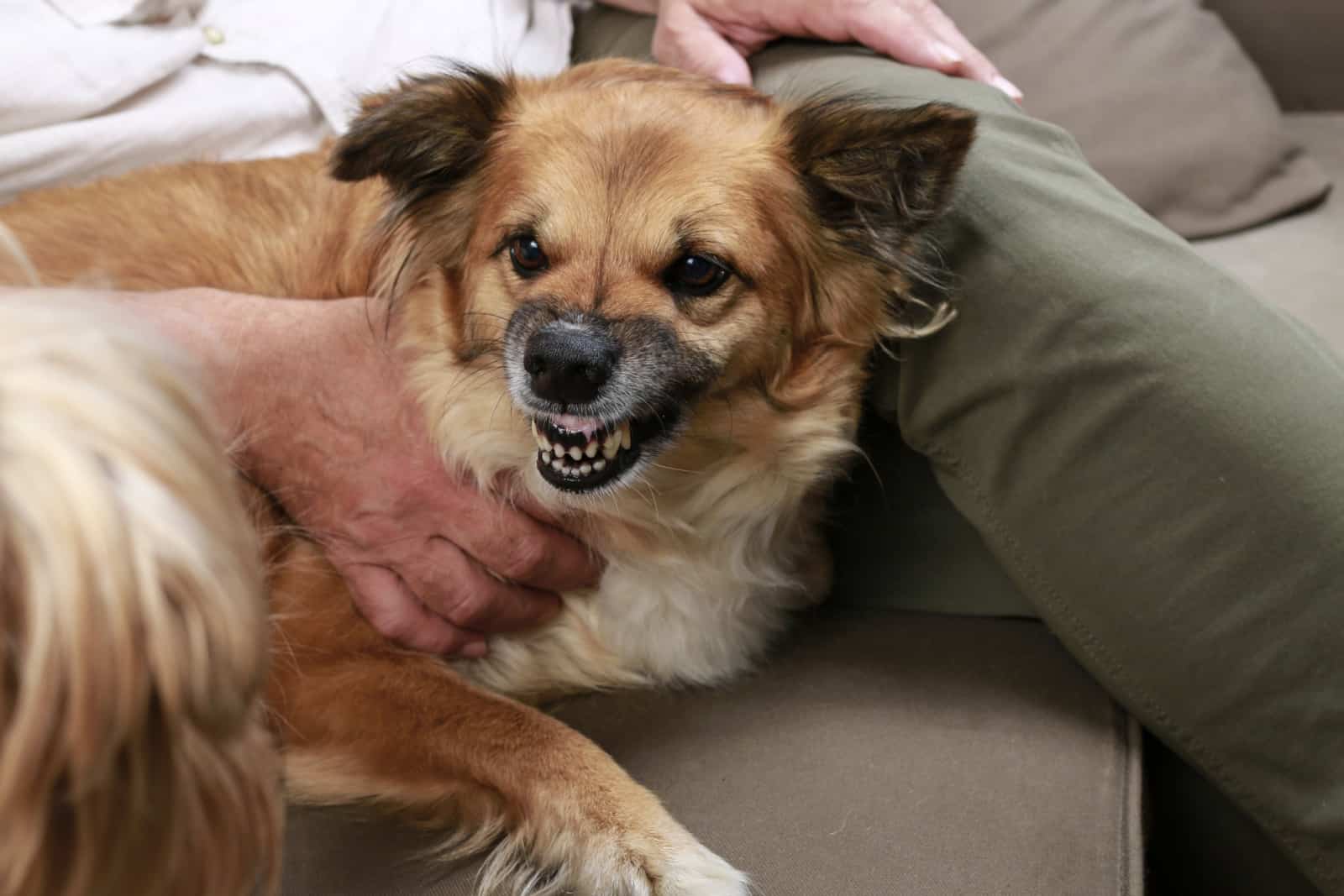
A slightly more brief section as it only revolves around the pitch of the growl which doesn’t have a lot of variation.
1. The Standard Growl
Standard growling is a more intentional, albeit still lower pitch but quite loud and more guttural.
You’ll definitely notice the aggression behind the sound which is often followed by actions indicating that the dog is ready to attack or is being aggressive.
2. A Fearful Growl
Fearful growls are higher pitched and often brief, resembling short whines. They’re a sign the dog is either in pain or afraid of whatever is in his vicinity.
If the problem isn’t you, then remove whatever the actual problem is from the dog’s vicinity or remove the dog from the situation otherwise to keep him from getting more stressed.
3. A Playful Growl
One that’s often slightly higher pitched than usual but isn’t used to convey any form of negative emotion.
Instead, it shows the fact that the dog is eager to play or is already in the process of having fun.
4. Dog Purring
An extra one at the end which is often confused for growling.
This one happens when your dog is having the time of his life in a cuddle session and ends up producing sounds similar to that of a cat’s purr, a quieter, lower pitched growl.
The tail movement here is optional, but you’ll almost immediately know he’s in his happy place and that you should continue doing what you’re doing.
RELATED: Dog Growling At Nothing: 3 Common Causes
In Conclusion
Whether you see your or your neighbor’s dog growling while wagging his tail, know that it can be due to a variety of reasons and that it can mean a number of different things.
It’s important to read into the nuance of the growls and the tail wags themselves.
But, to be on the safe side, it’s best to not approach the doggo any further until you figure out what it is he’s trying to convey.
Once you do, take the appropriate actions and you should see the behavior subside in case of more negative behavior.
While it may take you a while at the start, the more you interact with said behavior, the quicker you’ll become on the uptake until the behavior processing becomes almost second nature.
Just keep going at it and both you and your dog will have taken the next step toward a healthier level of communication.
Until next time, pet parents.
READ NEXT: Why Do Dogs Wag Their Tails – Tail Positions Explained















